I believe I have reported on these fat plants before, but they are worth another story for some of you new readers- or to review for old readers!
This is the time of the year when pachypodiums do their blooming, since their native lands are around or below the equator, so they bloom during our fall of the year. Pachypodiums are what we call fat plants, caudiciforms that store water in their fat stems, or what looks like to most of us, their trunks. This fat stem is also called the caudex, which means tree trunk in Latin.
You can see their spines that come mostly in pairs all over the caudex and the branches of this p. lealii saundersii. This plant is also called a bottle tree, as it gets bigger out in the wild and as it grows into a small tree, really is shaped like a bottle. P. lealii saundersii’s flowers have a touch of pink to them.
P.baronii also has the caudex with spines, but flowers that are white.
Pachypodiums are in the family Apocynaceae and are kin to oleander, periwinkle, and plumeria. P. lealii saundersii is native to Namibia, Angola, Zimbabwe, and South Africa. P. baronii is also found in Madagascar, where there are many other pachypodiums. P. lealii saundersii in particular, and maybe some of the others, produce a watery latex full of toxic alkaloids that native populations use for poisonous arrows for hunting, which I doubt you will want to do. But do keep the sap away from your eyes; it can cause blindness. Again, this is not to scare you away from the plant, but to keep you informed because sometimes they do need to be pruned. The branches can get quite octopus-like and take up space.
Water pachypodiums more in warm weather, less in cool weather. And of course, they are not cold-hardy and need to be protected from freezing. Give them plenty of light all year and enjoy.
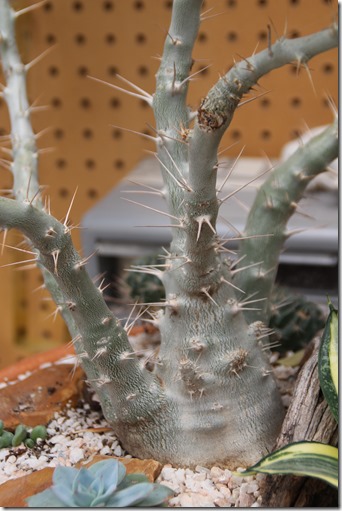
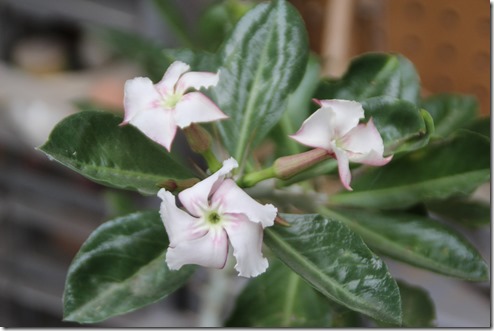
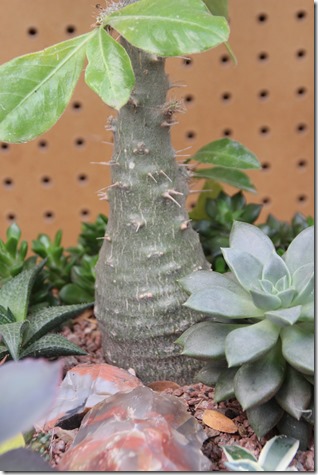
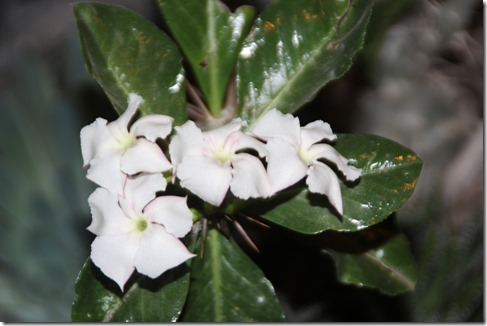
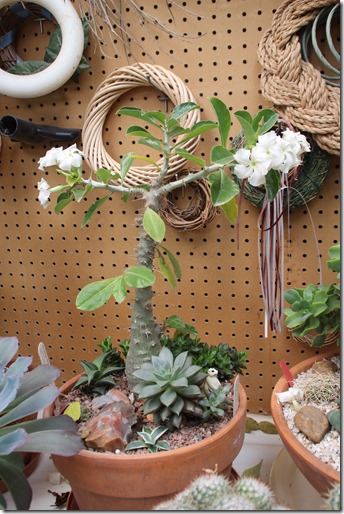
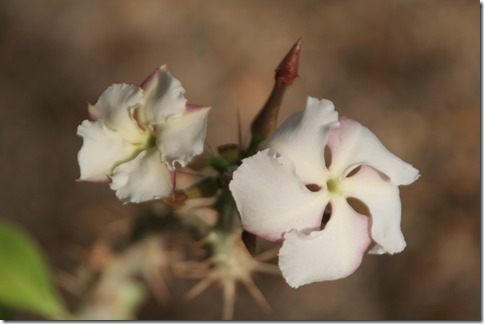
Pachypodium baronii has red flowers. Both of your plants are pachypodium parlour sandersii